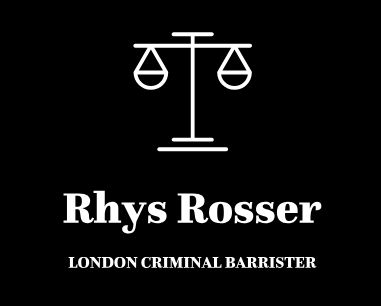The Section 45 Defence - Loophole or Lifeline
Rhys discusses the case of DPP v M and the impact on the Section 45 defence

The Court of Appeal and High Court have considered Modern Slavery cases and the Section 45 defence on a regular basis since its introduction in 2015. However, they had not, until DPP v M [2020] EWHC 3422 considered the issue of the applicability of the decision of the National Referral Mechanism (NRM) to criminal proceedings.
By way of brief recap, where a suspect/defendant is considered to be the victim of ‘Modern Slavery’ (i.e. exploitation/forced labour) they are referred to the National Referral Mechanism, a body of the NCA and referred to as the Single Competent Authority. The Single Competent Authority (SCA) will initially decide whether there are reasonable grounds to believe that the individual is such a victim (within 5 working days) before turning to making a conclusive grounds decision (within 45 days) – this decision being made on the balance of probabilities. The findings of the SCA are then recorded, and disclosed to the defence, in the form of a ‘decision minute’.
If an individual receives a positive conclusive grounds decision, the CPS will then apply their own policy and guidelines to determine whether or not the proceedings should continue. The NRM decision clearly plays a vital role in this determination, but what of the Jury/Magistrate’s determination?
In DPP v M, the High Court considered two separate issues:
Whether the decision minute of the SCA is admissible in criminal proceedings;
What evidential weight that decision has.
The factual background of DPP v M was that a young person (M) was arrested and charged with offences of Possession of a Bladed Article and Possession of Cocaine & Heroin. Following his arrest, M was referred to the National Referral Mechanism and they reached a conclusive grounds decision that M had been recruited, harboured and transported for the purposes of criminal exploitation.
The fact of the decision of the SCA was admitted into evidence as an agreed fact pursuant to Section 10 of the Criminal Justice Act 2003. The decision minute that underpinned this decision was exhibited into evidence and contained various factors regarding M’s background and his exploitation.
The District Judge heard the prosecution case, the Defendant did not give evidence. The District Judge was invited by the defence to conclude that in light of the burden and standard in R v MK (namely that the Defendant bears an evidential burden that the Prosecution must then disprove to the criminal standard) that the Crown had failed to disprove the Section 45 defence and so the defendant ought to be acquitted. The District Judge agreed with that submission and found M not guilty. The Prosecution appealed by way of case stated.
The first issue determined by the High Court was that of admissibility of the decision, notwithstanding that they were not specifically asked to by the lower court.
It was not disputed as to whether or not when arguing an abuse of process (i.e. relating to the decision to prosecute a defendant who has the benefit of a positive conclusive grounds decision) that the decision minute would be admissible. However, the Crown’s position was that the decision minute was both non-expert opinion and hearsay in respect of the factual determination as to guilt.
The starting point taken by the High Court as to admissibility was the willingness of the Court of Appeal to consider it as fresh evidence, such as in R v N [2019] EWCA Crim 984and R v S(G) [2018] EWCA Crim 1828. The Court clearly reached the view that there was no firm guidance as to admissibility.
The High Court in M concluded that the SCA (NRM) decision is admissible in criminal proceedings on the basis of the following:
The decision maker had expertise in relation to the issues;
The decision was based on a proper evidential foundation;
The decision could be considered against other evidence and the tribunal would make a decision as to weight – not admissibility.
In those circumstances, it was held that the decision of the NRM (or Single Competent Authority as it is now widely referred to) would be admissible by way of Section 10 admission.
The impact on the CPS policy was considered briefly by the High Court who held that the “weight afforded” to a decision of the SCA would clearly vary, as such there is limited impact.
The High Court next turned to consider whether the evidence of the conclusive grounds decision of the SCA was sufficient, of itself, to discharge the evidential burden on the defendant pursuant to Section 45. It is, at this juncture, important to consider what must be shown for a young person to benefit from the Section 45 defence:
Whether they committed the offences as a direct consequence of being a victim of exploitation;
Whether a reasonable person in their position would have committed the offences.
The decision of the SCA cannot address the second issue, this will be a matter for the tribunal in considering the other evidence in the case. In the case of M this requirement was met by reliance on evidence from social services as to his particular background and his relevant circumstances.
The High Court eventually concluded that the decision of the SCA, combined with the independent evidence of what was known about M, was sufficient to meet the evidential burden and as such the Prosecution were required to prove, beyond reasonable doubt, that the commission of the offences was not a direct consequence of the exploitation.
The case of M provides substantial guidance as to how the NRM decision should be approached in criminal proceedings. It lays bare the importance of seeking a referral to the NRM and the importance of providing written representations as to charge to the CPS upon receipt of a decision from the SCA. We may well see a change in CPS charging policy, and the application of the existing policy, as a result of the firm direction both as to admissibility and the decision’s weight in satisfying the evidential burden.
Fill in the Below to Contact Rhys and to obtain legal advice










